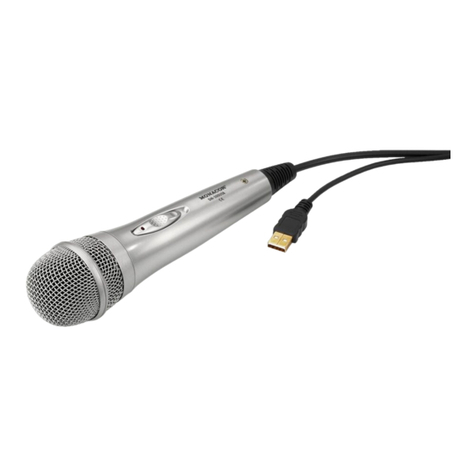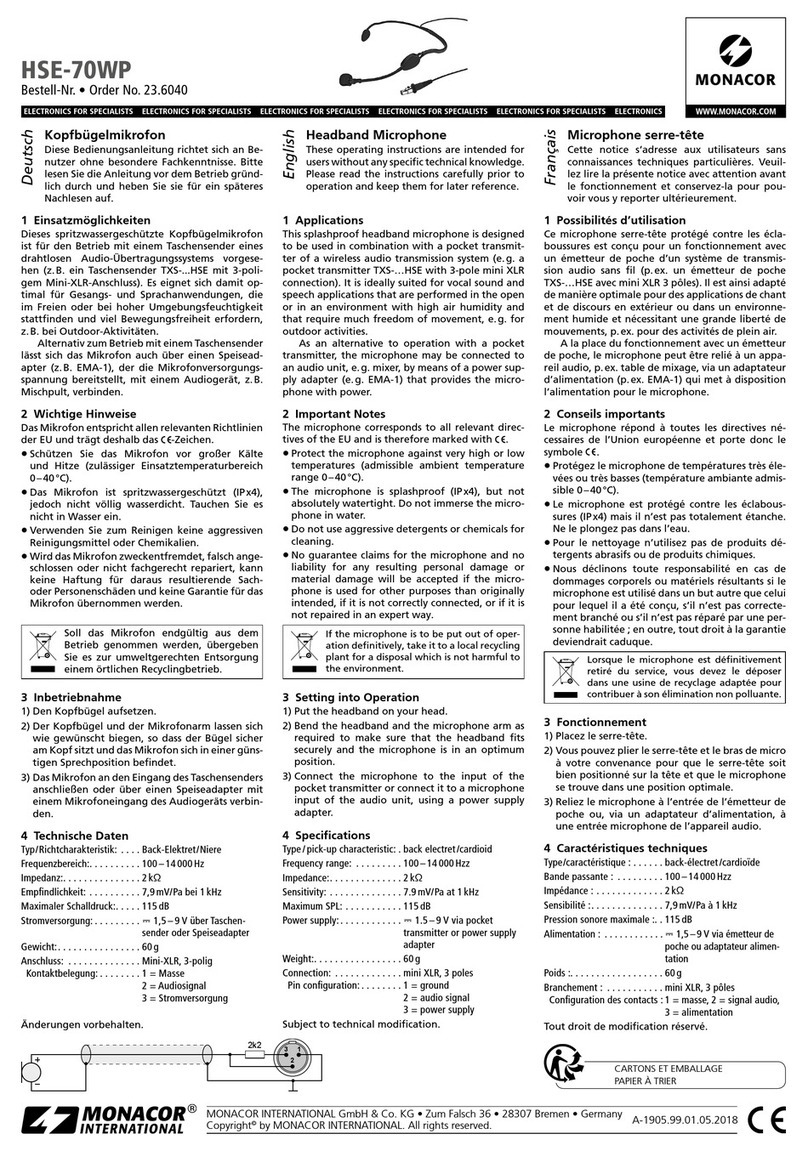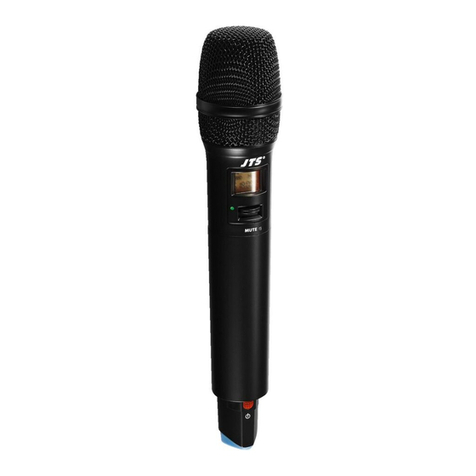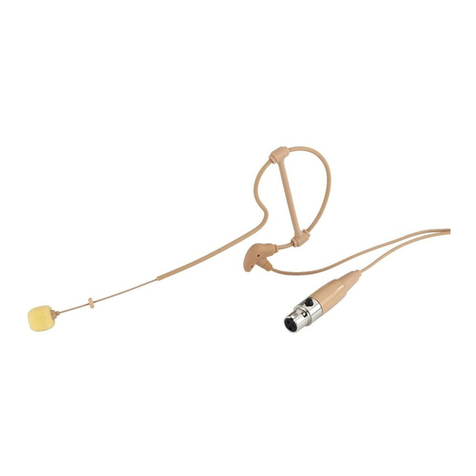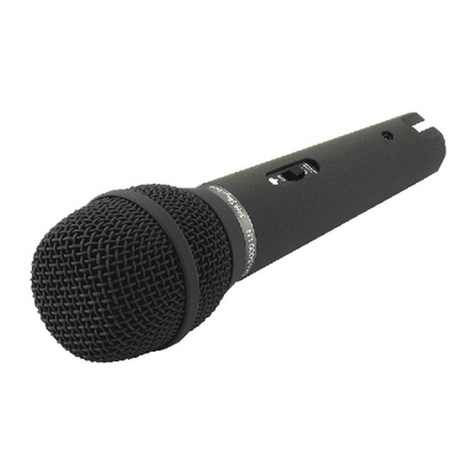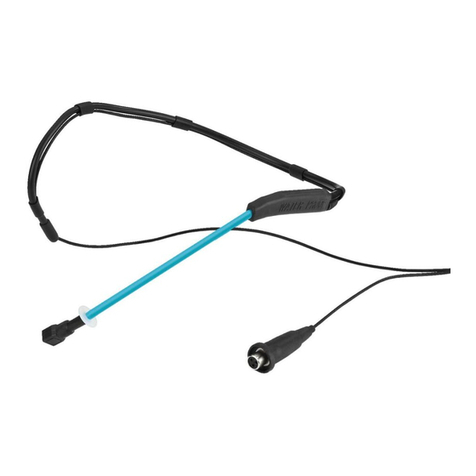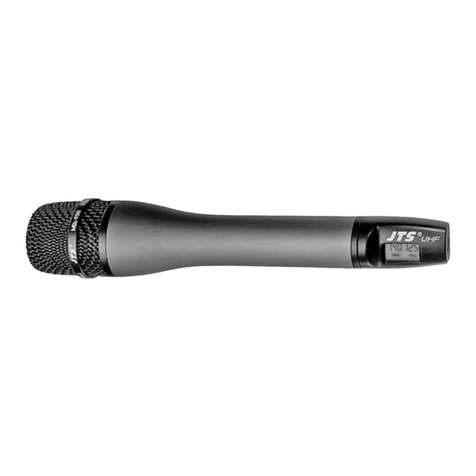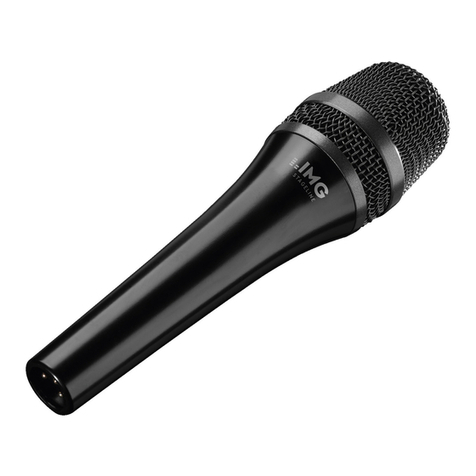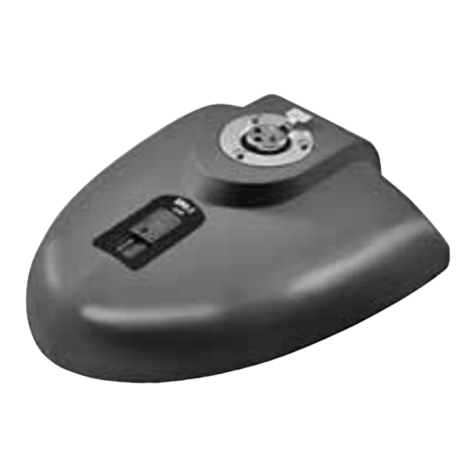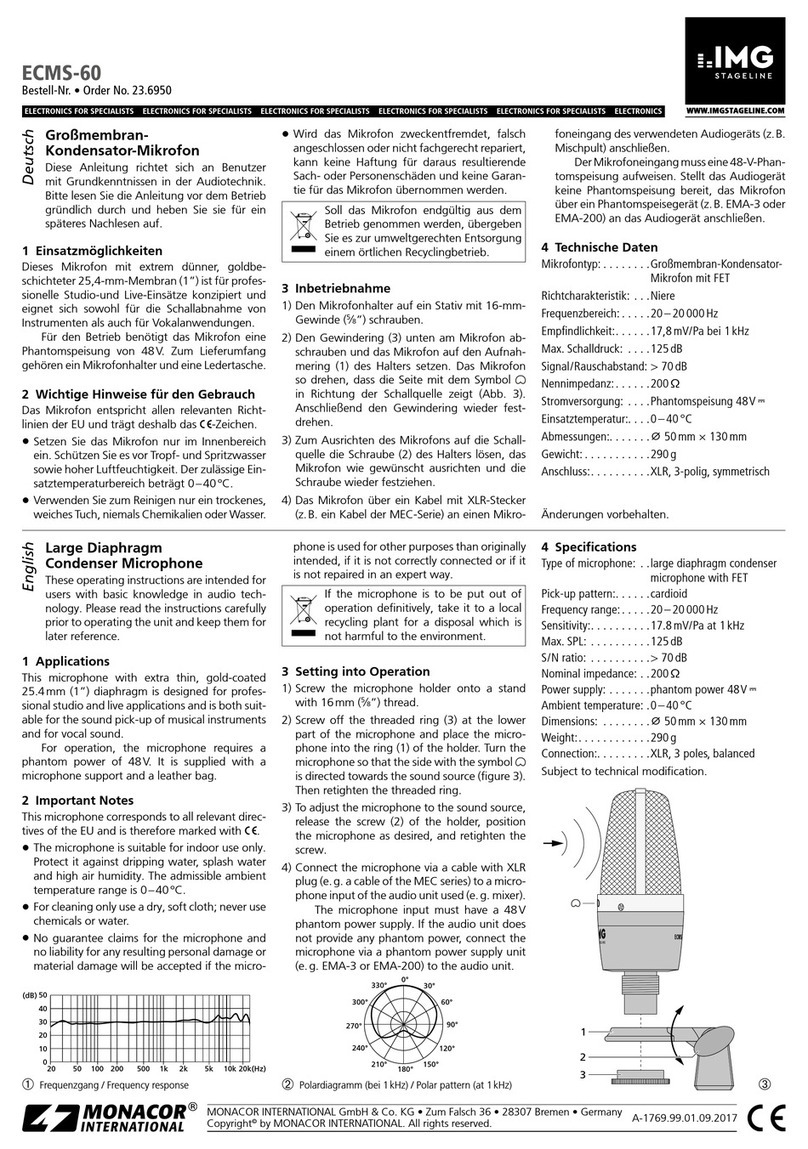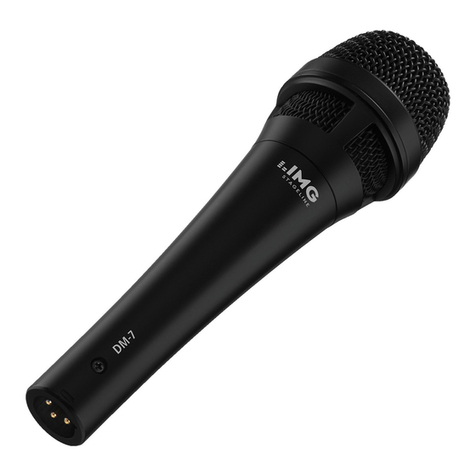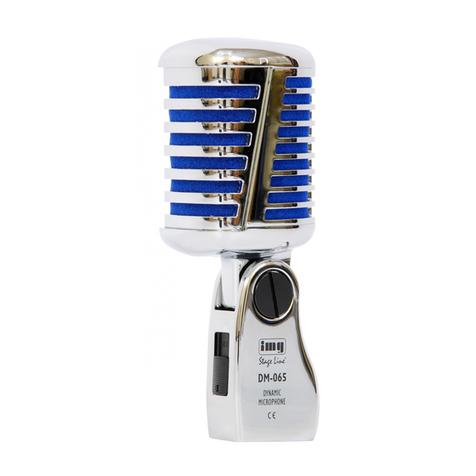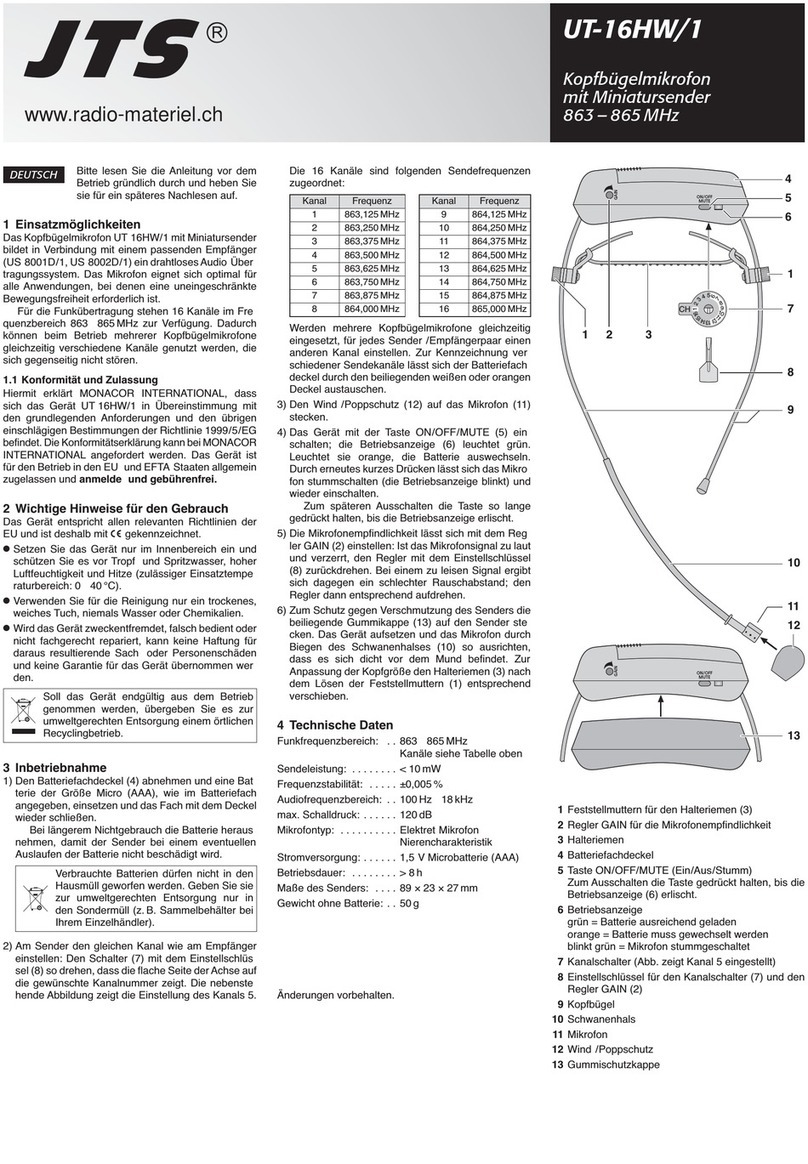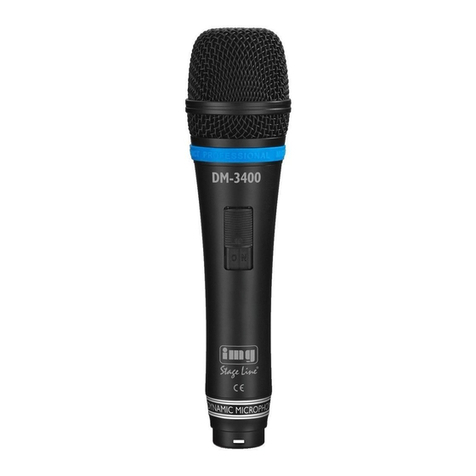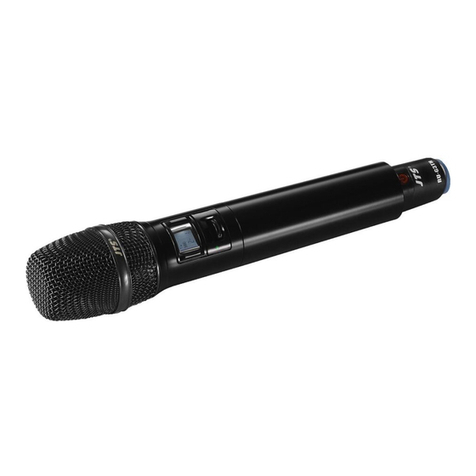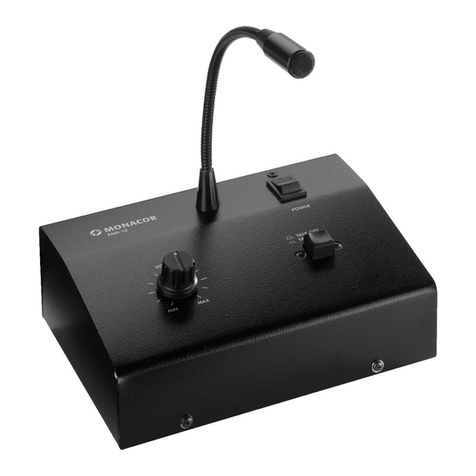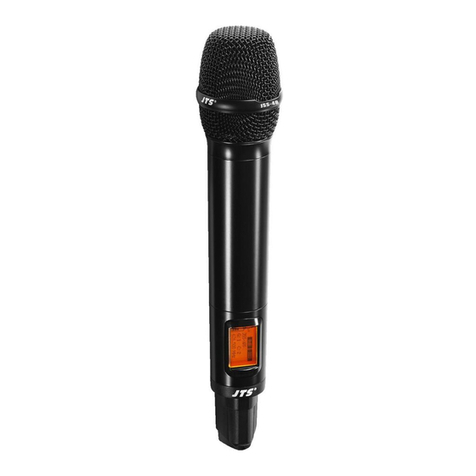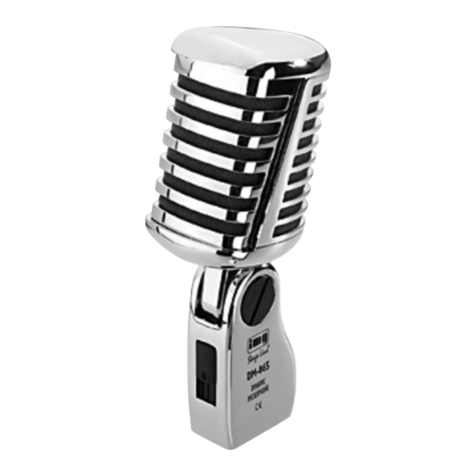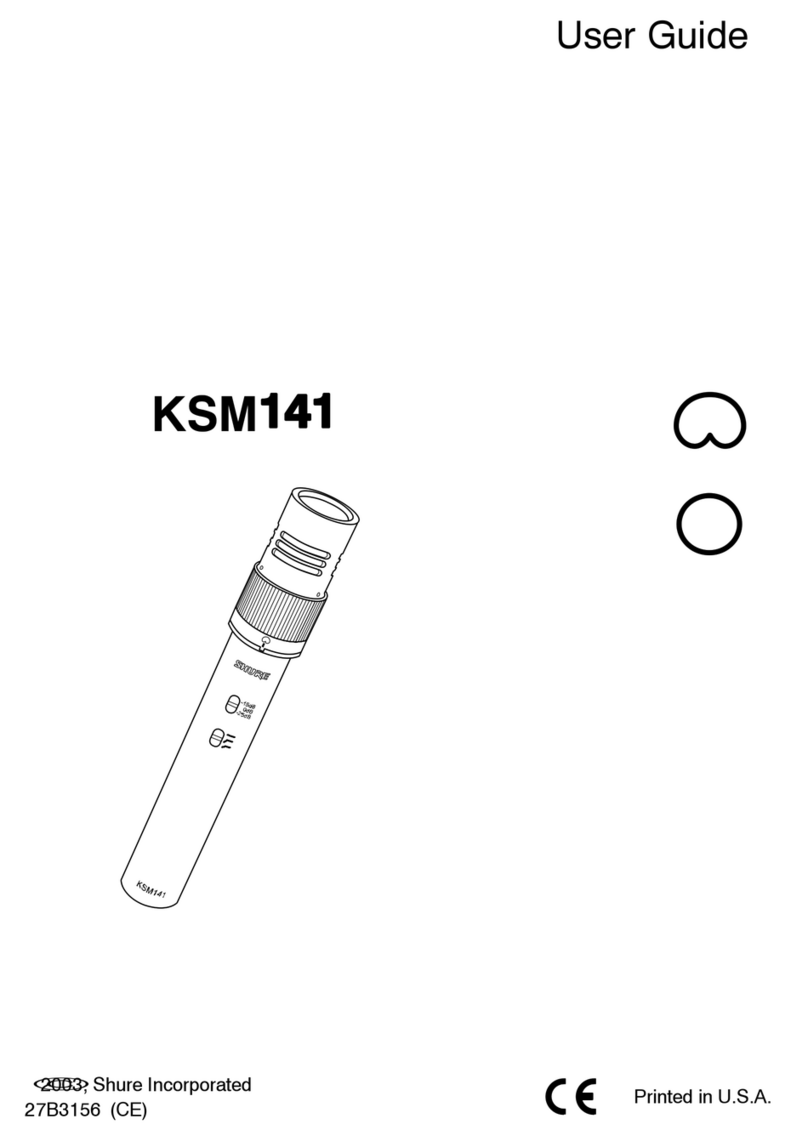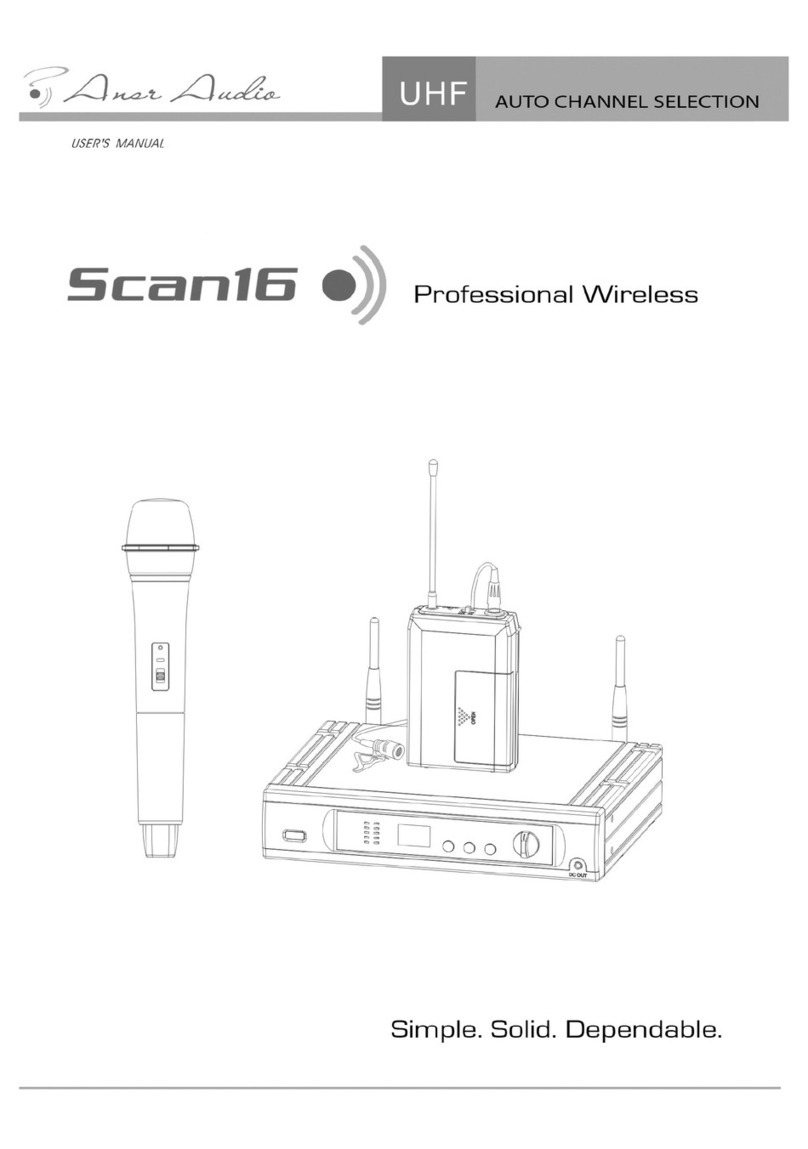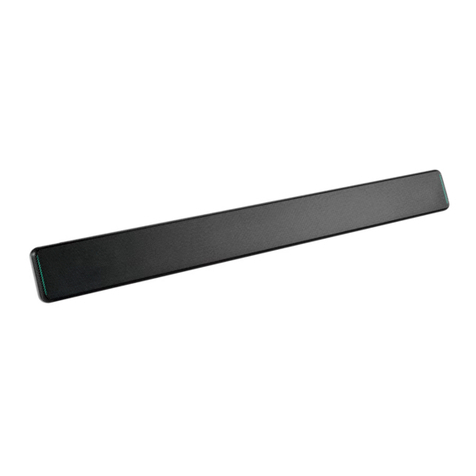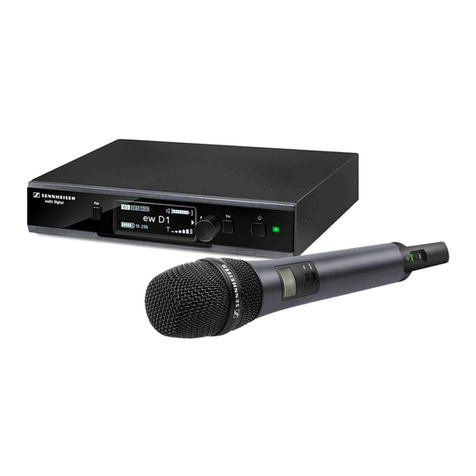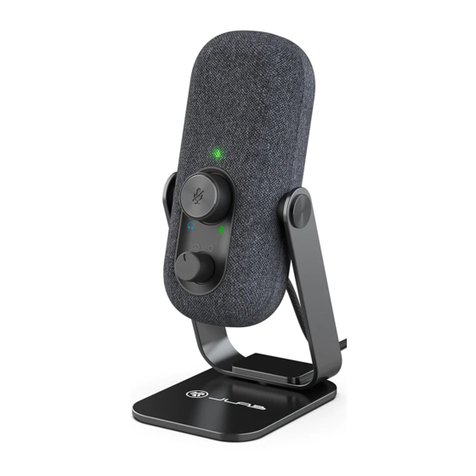Kopfbügelmikrofon
Bitte lesen Sie diese Bedienungsanleitung vor dem Betrieb
gründlich durch und heben Sie sie für ein späteres Nach-
lesen auf.
1 Einsatzmöglichkeiten
Dieses spritzwassergeschützte Kopfbügelmikrofon ist
für den Betrieb mit einem Taschensender eines draht-
losen Audio-Übertragungssystems vorgesehen (z. B. ein
Taschensender TXS-...HSE mit 3-poligem Mini-XLR-
Anschluss von „img Stage Line“). Es eignet sich damit op-
timal für Gesangs- und Sprachanwendungen, die im
Freien oder bei hoher Umgebungsfeuchtigkeit stattfinden
und viel Bewegungsfreiheit erfordern, z. B. bei Outdoor-
Aktivitäten.
Alternativ zum Betrieb mit einem Taschensender lässt
sich das Mikrofon auch über einen Speiseadapter (z. B.
EMA-1 von „img Stage Line“), der die Mikrofonversor-
gungsspannung bereitstellt, mit einem Audiogerät, z. B.
Mischpult, verbinden.
2 Wichtige Hinweise für den Gebrauch
Das Mikrofon entspricht allen relevanten Richtlinien der
EU und ist deshalb mit gekennzeichnet.
GSchützen Sie das Mikrofon vor großer Kälte und Hitze
(zulässiger Einsatztemperaturbereich 0 – 40 °C).
GDas Mikrofon ist spritzwassergeschützt, jedoch nicht völ-
lig wasserdicht. Tauchen Sie es nicht in Wasser ein.
GVerwenden Sie zum Reinigen keine aggressiven Reini-
gungsmittel oder Chemikalien.
GWird das Mikrofon zweckentfremdet, falsch ange-
schlossen oder nicht fachgerecht repariert, kann keine
Haftung für daraus resultierende Sach- oder Personen-
schäden und keine Garantie für das Mikrofon übernom-
men werden.
3 Inbetriebnahme
Den beiliegenden Schaumstoff-Poppschutz über das Mi-
krofon ziehen und den Kopfbügel aufsetzen. Der Kopf-
bügel und der Mikrofonarm lassen sich wie gewünscht
biegen, so dass der Bügel sicher am Kopf sitzt und das
Mikrofon sich in einer günstigen Sprechposition befindet.
Achtung: Den Bügel und den Mikrofonarm nicht zu stark
biegen, damit sie nicht brechen. Der Biegeradius darf
30 mm nicht unterschreiten.
Das Mikrofon an den Eingang des Taschensenders
anschließen oder über einen Speiseadapter mit einem
Mikrofoneingang des Audiogeräts verbinden.
4 Technische Daten
Typ: . . . . . . . . . . . . . . . Back-Elektret
Richtcharakteristik: . . . Kugel
Frequenzbereich: . . . . 20 – 20 000 Hz
Impedanz: . . . . . . . . . . 2 kΩ
Empfindlichkeit: . . . . . . 5,6 mV/Pa bei 1 kHz
Maximaler Schalldruck: 130 dB
Stromversorgung: . . . . 1,5–9V
über Taschensender
oder Speiseadapter
Gewicht: . . . . . . . . . . . 45 g
Anschluss: . . . . . . . . . . Mini-XLR, 3-polig
Kontaktbelegung: . . . 1 = Masse,
2 = Audiosignal,
3 = Stromversorgung
Änderungen vorbehalten.
Soll das Mikrofon endgültig aus dem Betrieb genom-
men werden, übergeben Sie es zur umweltgerechten
Entsorgung einem örtlichen Recyclingbetrieb.
Headband Microphone
Please read these operating instructions carefully prior to
operation and keep them for later use.
1 Applications
This splashproof headband microphone is designed to
be used in combination with a pocket transmitter of a wire-
less audio transmission system (e. g. pocket transmitter
TXS-…HSE with 3-pole mini XLR connection from “img
Stage Line”). It is ideally suited for vocal sound and speech
applications that are performed in the open or in an envi-
ronment with high air humidity and that require much free-
dom of movement, e. g. for outdoor activities.
As an alternative to the operation with a pocket trans-
mitter, the microphone may be connected to an audio unit,
e. g. mixer, by means of a power supply adapter (e. g.
EMA-1 from “img Stage Line”) that provides the micro-
phone with power.
2 Important Notes
The microphone corresponds to all relevant directives of
the EU and is therefore marked with .
GProtect the microphone against very high or low
temperatures (admissible ambient temperature range
0 – 40 °C).
GThe microphone is splashproof, but not absolutely
watertight. Do not immerse the microphone in water.
GDo not use aggressive detergents or chemicals for
cleaning.
GNo guarantee claims for the microphone and no liability
for any resulting personal damage or material damage
will be accepted if the microphone is used for other pur-
poses than originally intended, if it is not correctly con-
nected, or if it is not repaired in an expert way.
3 Setting into Operation
Place the foam pop protection supplied onto the micro-
phone and put on the headband. Bend the headband and
the microphone arm as required to make sure that the
headband fits securely and the microphone is in an opti-
mum position. Caution: Do not bend the headband and
the microphone arm too much; otherwise they may break.
The bend radius must not be smaller than 30 mm.
Connect the microphone to the input of the pocket trans-
mitter or connect it to a microphone input of the audio unit,
using a power supply adapter.
4 Specifications
Type: . . . . . . . . . . . . . . . back electret
Pick-up characteristic: . . omnidirectional
Frequency range: . . . . . . 20 – 20 000 Hz
Impedance: . . . . . . . . . . . 2 kΩ
Sensitivity: . . . . . . . . . . . 5.6 mV/Pa at 1 kHz
Maximum SPL: . . . . . . . . 130 dB
Power supply: . . . . . . . . . 1.5–9V
via pocket transmit-
ter or power supply adapter
Weight: . . . . . . . . . . . . . . 45 g
Connection: . . . . . . . . . . mini XLR, 3 poles
Pin configuration: . . . . 1 = ground,
2 = audio signal,
3 = power supply
Subject to technical modification.
If the microphone is to be put out of operation defini-
tively, take it to a local recycling plant for a disposal
which is not harmful to the environment.
Microphone serre-tête
Veuillez lire la présente notice avec attention avant le fonc-
tionnement et conservez-la pour pouvoir vous y reporter
ultérieurement.
1 Possibilités dʼutilisation
Ce microphone serre-tête protégé contre les éclaboussures
est conçu pour un fonctionnement avec un émetteur de
poche dʼun système de transmission audio sans fil (p. ex.
un émetteur de poche TXS-…HSE avec mini XLR 3 pôles
de “img Stage Line”). Il est ainsi adapté de manière opti-
male pour des applications de chant et de discours en
extérieur ou dans un environnement humide et nécessitant
une grande liberté de mouvements, p. ex. pour des activi-
tés de plein air.
A la place du fonctionnement avec un émetteur de
poche, le microphone peut être relié à un appareil audio,
p. ex. table de mixage, via un adaptateur dʼalimentation
(p. ex. EMA-1 de “img Stage Line”) qui met à disposition
lʼalimentation pour le microphone.
2 Conseils importants dʼutilisation
Le microphone répond à toutes les directives nécessaires
de lʼUnion européenne et porte donc le symbole .
GProtégez le microphone de températures très élevées ou
très basses (température ambiante admissible 0 – 40°C).
GLe microphone est protégé contre les éclaboussures
mais il nʼest pas totalement étanche. Ne le plongez pas
dans lʼeau.
GPour le nettoyage nʼutilisez pas de produits détergents
abrasifs ou de produits chimiques.
G
Nous déclinons toute responsabilité en cas de dom-
mages corporels ou matériels résultants si le microphone
est utilisé dans un but autre que celui pour lequel il a été
conçu, sʼil nʼest pas correctement branché ou réparé par
une personne habilitée ; en outre, tout droit à la garantie
deviendrait caduque.
3 Fonctionnement
Placez la bonnette anti-pop en mousse livrée sur le mi-
crophone et placez le serre-tête. Vous pouvez plier le
serre-tête et le bras de micro à votre convenance pour
que le serre-tête soit bien positionné sur la tête et que
le microphone se trouve dans une position optimale.
Attention : ne pliez pas trop lʼétrier et le bras du micro-
phone ; ils pourraient se casser. Le rayon de pliage ne doit
pas être inférieur à 30 mm.
Reliez le microphone à lʼentrée de lʼémetteur de poche
ou, via un adaptateur dʼalimentation, à une entrée micro-
phone de lʼappareil audio.
4 Caractéristiques techniques
Type : . . . . . . . . . . . . . . . . . . . back-électret
Caractéristique : . . . . . . . . . . . omnidirectionnel
Bande passante : . . . . . . . . . . 20 – 20 000 Hz
Impédance : . . . . . . . . . . . . . . 2 kΩ
Sensibilité : . . . . . . . . . . . . . . . 5,6 mV/Pa à 1 kHz
Pression sonore maximale : . . 130 dB
Alimentation : . . . . . . . . . . . . . 1,5–9V
via
émetteur de poche ou
adaptateur alimentation
Poids : . . . . . . . . . . . . . . . . . . . 45 g
Branchement : . . . . . . . . . . . . . mini XLR 3 pôles
Configuration des contacts : 1 = masse, 2 = signal
audio, 3 = alimentation
Tout droit de modification réservé.
Lorsque le microphone est définitivement retiré du
service, vous devez le déposer dans une usine de
recyclage de proximité pour contribuer à son élimi-
nation non polluante.
MONACOR INTERNATIONAL GmbH & Co. KG • Zum Falsch 36 • 28307 Bremen • Germany
Copyright ©by MONACOR INTERNATIONAL. All rights reserved. A-1562.99.01.05.2014
®
HSE-200WP/BL
Bestellnummer 23.6370
ELECTRONICS FOR SPECIALISTS ELECTRONICS FOR SPECIALISTS ELECTRONICS FOR SPECIALISTS ELECTRONICS FOR SPECIALISTS ELECTRONICS FOR SPECIALISTS ELECTRONICS FOR SPECIALISTS ELECTRONICS FOR SPECIALISTS
D A CH GB F B CH
